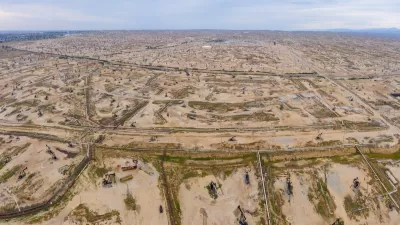Paul Stenquist analyzes the surprising influence that geography has on the carbon footprint of electric vehicles.
As Americans increasingly turn to electric vehicles due to rising gas costs and interest in reducing greenhouse gas emissions, a new report shows that another set of calculations should be considered. The report, released by the Union of Concerned Scientists on Monday, shows that "the effect of electric vehicles on the amount of greenhouse gases released into the environment can span a wide range, varying with the source of the electricity that charges them. "
Their well-to-wheels analysis considers the full cycle of energy production. "It demonstrates that in areas where the electric utility relies on natural gas, nuclear, hydroelectric or renewable sources to power its generators, the potential for electric cars and plug-in hybrids to reduce carbon dioxide emissions is great. But where generators are powered by burning a high percentage of coal, electric cars may not be even as good as the latest gasoline models - and far short of the thriftiest hybrids."
Stenquist examines the geographical breakdown of electricity generation. Electricity in the midsection of the U.S. is generated in large part by coal, while cities like Seattle and Los Angeles, and surprisingly, Buffalo and New Orleans, are in regions where there is cleaner power.
According to data released in 2010 by the United States Energy Information Administration, "45 percent of the country's electricity is generated by burning coal, the dirtiest fuel. Natural gas, a much cleaner fuel, accounts for 24 percent of electricity production, a figure that is shifting rapidly with price swings. Nuclear plants generate 20 percent of the nation's power, while wind, solar and geothermal sources provide 3 percent." While these numbers help to educate, they also affirm the need for changes in electric power generation in order to maximize the use of electric and hybrid cars.
FULL STORY: How Green Are Electric Cars? Depends on Where You Plug In

Trump Administration Could Effectively End Housing Voucher Program
Federal officials are eyeing major cuts to the Section 8 program that helps millions of low-income households pay rent.

Planetizen Federal Action Tracker
A weekly monitor of how Trump’s orders and actions are impacting planners and planning in America.

Ken Jennings Launches Transit Web Series
The Jeopardy champ wants you to ride public transit.

Driving Equity and Clean Air: California Invests in Greener School Transportation
California has awarded $500 million to fund 1,000 zero-emission school buses and chargers for educational agencies as part of its effort to reduce pollution, improve student health, and accelerate the transition to clean transportation.

Congress Moves to End Reconnecting Communities and Related Grants
The House Transportation and Infrastructure Committee moved to rescind funding for the Neighborhood Equity and Access program, which funds highway removals, freeway caps, transit projects, pedestrian infrastructure, and more.

From Throughway to Public Space: Taking Back the American Street
How the Covid-19 pandemic taught us new ways to reclaim city streets from cars.
Urban Design for Planners 1: Software Tools
This six-course series explores essential urban design concepts using open source software and equips planners with the tools they need to participate fully in the urban design process.
Planning for Universal Design
Learn the tools for implementing Universal Design in planning regulations.
Heyer Gruel & Associates PA
Ada County Highway District
Institute for Housing and Urban Development Studies (IHS)
City of Grandview
Harvard GSD Executive Education
Toledo-Lucas County Plan Commissions
Salt Lake City
NYU Wagner Graduate School of Public Service





























